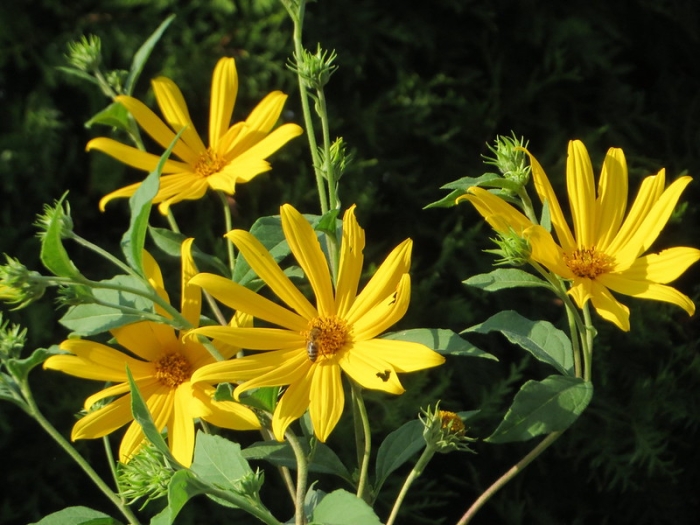Jerusalem Artichoke
(Helianthus tuberosus)
Jerusalem Artichoke (Helianthus tuberosus)
/
/

Andreas Rockstein
CC BY-SA 2.0



































































Estimated Native Range
Summary
Jerusalem Artichoke is valued for its edible tubers, which have a crisp texture and are used as a root vegetable. It is also appreciated for its ease of maintenance and tolerance to a range of soil conditions. This plant is commonly used in vegetable gardens and as a naturalized addition to wildflower meadows. It thrives in full sun to part shade and prefers well-drained soils, though it can tolerate poorer soils. It requires low to moderate watering once established. While it has many benefits, Helianthus tuberosus can be invasive outside its native range, and its aggressive growth can make it difficult to control. It is important to manage its spread to prevent it from becoming a problem in non-native ecosystems.CC BY-SA 4.0
Plant Description
- Plant Type: Herb
- Height: 6-10 feet
- Width: 3-5 feet
- Growth Rate: Rapid
- Flower Color: Yellow
- Flowering Season: Summer
- Leaf Retention: Deciduous
Growth Requirements
- Sun: Full Sun, Part Shade
- Water: Medium
- Drainage: Fast, Medium
Common Uses
Bee Garden, Bird Garden, Butterfly Garden, Deer Resistant, Drought Tolerant, Edible*Disclaimer: Easyscape's listed plant edibility is for informational use. Always verify the safety and proper identification of any plant before consumption., Low Maintenance, Rabbit Resistant, Showy Flowers
Natural Habitat
Native to a variety of habitats including open woodlands, riverbanks, and prairies and fields in North America
Other Names
Common Names: Sunroot, Sunchoke, Wild Sunflower, Earth Apple, Iroquois Potato, Jerusalem Sunflower, Topinambur, Topinambour, Hélianthe Tubéreux, Aardpeer
Scientific Names: , Helianthus tuberosus, Helianthus tomentosus, Helianthus doronicoides, Helianthus subcanescens, Helianthus tuberosus var. subcanescens, Helianthus serotinus, Helianthus tuberosus var. albus, Helianthus tuberosus var. purpureus, Helianthus tuberosus f. oswaldiae
GBIF Accepted Name: Helianthus tuberosus L.